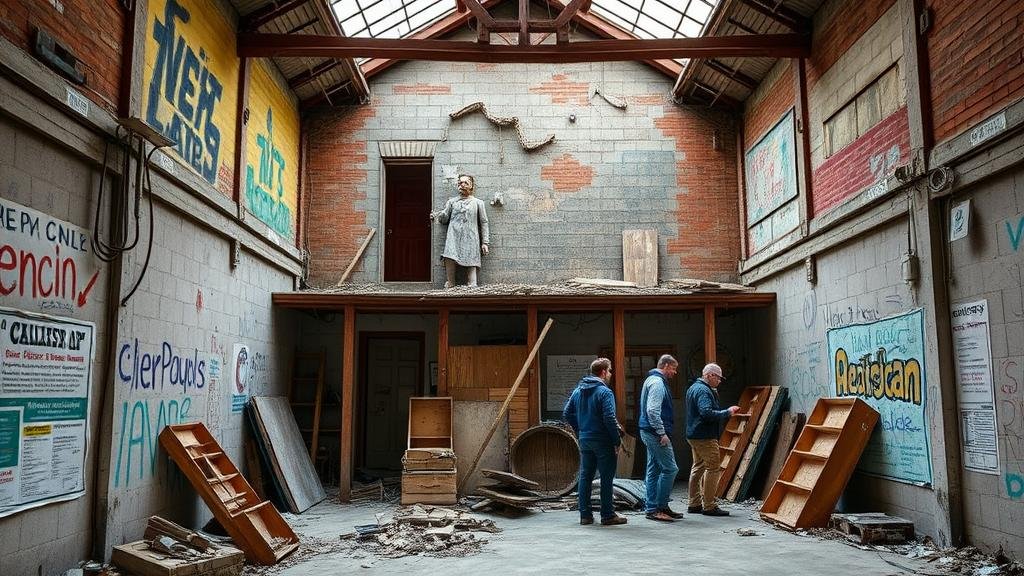Recovering Forgotten Treasure Caches in Urban Abandoned Buildings
Recovering Forgotten Treasure Caches in Urban Abandoned Buildings
The phenomenon of urban exploration (urbex) has grown significantly over the last decade, with enthusiasts drawn to the hidden relics of the past resting in urban abandoned buildings. Among the most intriguing elements of these locations are the treasure caches–historically significant objects, money, or hidden treasures left behind. This article explores methodologies for locating and recovering these forgotten treasures, supported by case studies and best practices. It offers a guide for would-be treasure hunters interested in urban archaeology, historical preservation, and adventure.
Understanding Urban Abandonment
Urban abandonment occurs for various reasons–economic decline, population increase in suburbs, or urban decay result in buildings being left to deteriorate. For example, Detroit is a city emblematic of this trend, with thousands of structures abandoned after the automotive industry collapse. According to the U.S. Census Bureau, Detroits population dropped by over 60% from 1950 to 2010, leaving behind a significant number of unoccupied buildings, many harboring forgotten treasures.
The Value of Forgotten Treasures
Forgotten treasure caches can bear both historical and monetary value, offering insights into past lifestyles, economies, and cultures. For example, artifacts such as vintage toys, period furniture, and century-old coins might not only appeal to collectors but also serve as valuable educational resources. The 2016 discovery of a forgotten cache in an old bank in Philadelphia revealed documents and investments dating back to the 1800s, providing a glimpse into the economic history of the area.
Legal and Ethical Considerations
Before embarking on a search for treasure, it is crucial to understand the legal implications. Trespassing upon private property without permission is illegal and can lead to civil or criminal charges. Plus, ethical considerations must guide conduct during exploration. Respecting the integrity of historical sites ensures that the legacy of the location remains intact. Society for American Archaeology emphasizes the importance of preserving archaeological contexts for future generations. So, obtaining necessary permissions and collaborating with local historical societies is highly recommended.
Techniques for Locating Treasure Caches
Once the legal framework is established, treasure hunters can employ various techniques to locate hidden caches. Here are some effective methods:
- Research: Begin by examining historical maps, city archives, and local history books.
For example, using Sanborn Fire Insurance Maps can provide insight into past building usage. - Ground Penetrating Radar (GPR): This technology uses radar pulses to reveal underground images of structures, making it possible to detect buried treasures without invasive digging.
- Metal Detectors: High-quality metal detectors can find buried metal items. This technique proved successful when a hobbyist in Boston unearthed gold coins dating from the 1800s.
- Physical Exploration: Careful physical examination of a site allows explorers to engage directly with their environment, often revealing treasures hidden within furniture or walls.
Documenting and Recovering Artifacts
Proper documentation of findings is crucial for both educational and preservation purposes. Treasures should be cataloged, with details about their condition, exact location of discovery, and any relevant historical context noted. Following the guidelines put forth by the American Alliance of Museums ensures that the proper methods of curation and conservation are employed. Artifacts may require professional conservation depending on their material and condition, ensuring their longevity for future study.
Challenges of Urban Treasure Hunting
While the prospect of discovering lost treasures is thrilling, various challenges accompany urban treasure hunting. The buildings may pose physical dangers, including unstable structures, hazardous materials, and environmental issues. For example, lead paint and asbestos are common in old buildings and necessitate caution. Its advisable to conduct thorough assessments and wear protective gear when exploring.
Real-World Applications and Future Potential
Urban treasure caches can contribute significantly to community engagement and local history. For example, an urban expedition in New Orleans demonstrated how such exploration led to educational programs highlighting the city’s rich cultural tapestry. Local schools partnered with urban explorers to create history and archaeology programs, enhancing public interest and fostering community pride.
Conclusion
Recovering forgotten treasure caches in urban abandoned buildings is a blend of adventure, history, and responsible exploration. With the right legal, ethical, and methodological frameworks in place, treasure hunters can uncover significant artifacts that tell the story of past societies. Urban exploration, when approached with care and respect, not only yields valuable pieces of history but also fosters community awareness and appreciation. As cities continue to evolve, the treasures hidden within their walls remain a link to our collective heritage, waiting to be rediscovered.



